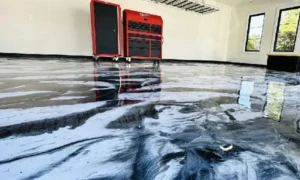Car tyres are frequently thought of as a relatively unimportant component of the car. The only point of contact between the car and the road is its tyres.
Discover what tyres really are in this blog post: a vital, excellent, expertly-engineered chassis component especially designed for contemporary, high-speed cars. They must be sturdy, roll smoothly, and complement a range of different suspension systems in addition to accurately responding to steering directions. Above all, tires must be able to withstand the forces placed on them during cornering, braking, and acceleration for vehicles to stay safely and securely on the road. When the road is icy, snowy, or wet, it is especially crucial to remember this. So, with your safety in mind, here are some pointers and recommendations to assist you in maintaining your tyres. Some helpful suggestions for maintaining and caring for your tyres
Tyres are innovative products that are specifically designed for current driving.
Your tyres will perform admirably if you take care of them.
You should handle your Car tyres carefully, as you do with any other technical product. In this manner, you can count on optimum driving performance and comfort for the duration of the tyres’ service life.
Every two weeks, you should inspect and check the pressure of all of your tyres, including the spare. If tyre damage occurs, have the tyre checked out right away by a local tyre expert.
Avoid damaged.
Tyre damage can occur without the driver’s knowledge. If you notice or suspect damage, have the tyre evaluated by a tyre specialist as soon as possible. If you must drive over an impediment, approach it carefully and as directly as possible. Regularly inspect your tyres for exterior damage such as cuts, cracks, or bulges.
Avoid overstressing your tyres.
Tyre overstressing (high speed or overloading) should get avoided. This has the same catastrophic effect as under-inflation and can cause irreversible tyre degradation. Keep your car from getting overloaded. Adjust your tyre pressures according to the vehicle manufacturer’s recommendations if you intend to drive in full-load/high-speed situations.
Regularly Check your tyre pressure.
Tyre pressure is crucial to the service life and safety performance of your tyres. Tyre pressures are separately calculated for each vehicle type by tyre and vehicle manufacturers. To determine the proper tyre pressure for your vehicle, consult the owner’s manual, the fuel tank cover, the car door, or the glove compartment.
Under or over-inflation limits the ability of the tyre to grip the road correctly. This not only causes excessive or uneven tread wear, but it also has a significant impact on handling, which can be especially dangerous while cornering at high speeds.
When the inflation pressure is insufficient for the load carried, the tyre temperature rises due to greater flexing. Excessive heat can cause structural damage to the tyre and potentially tyre failure.
Every two weeks, check and adjust the pressure in your tyres. Do not check your tyres when they are warm from driving; instead, wait until they are cool. You never know when you’ll need your spare or emergency/temporary spare tyre, so always keep an eye on it. Please refer to the supplemental material provided by the vehicle manufacturer for information on emergency/temporary spare tyres.
Check tyre tread depth.
Pay close attention to the tread of the tyre because it affects a number of performance factors greatly. The tread depth of the tyre, which is necessary by law to be at least 1.6 mm, is a significant consideration. Driving with less tread puts you at danger of getting fined or have points added to your licence.
Tread Wear Indicators (TWIs) are crucial tools for determining how much tread depth is there on the tyres. These raised bars are evenly spaced throughout the main longitudinal tread grooves of the tyre and that drop to the same level as the rest of the tread pattern once the required minimum tread depth of 1.6 mm get reached.
Since winter performance significantly declines below this tread depth, cold weather tyres have additional tread wear indicators that signal when the tread depth reaches 4 mm.
We highly advise drivers to replace their tyres before they reach the minimum legal tread depth because worn tyres significantly increase the risk of aquaplaning and reduce wet braking performance.
A good rule of thumb is to replace ordinary tyres when they have 3 mm of tread left and cold weather tyres when they have 4 mm.
Regularly have your car and tyres inspected by professionals.
This entails having the axle geometry checked and your tyres balanced. Vibration-free driving is usually ensured by routinely having your tyres balanced, such as when switching from standard to cold weather tyres. Furthermore, the
It makes your car drive more smoothly, reducing the wear on your tyres and other suspension components. Another benefit is that you are making the roads safer for you, your passengers, and other drivers.
Your tyres will eventually need replacing.
The choice of when a tyre should get replaced rests with the vehicle’s owner. They should take into account elements including the state of the service, previous maintenance, storage circumstances, visual inspections, and dynamic performance. Please see your neighbourhood tyre expert if you have any concerns regarding the condition of your tyres.
For a variety of reasons, including tread that has worn to the minimal depth, damage or abuse (punctures, cuts, impacts, cracks, bulges, under-inflation, overloading, etc.), tyres should be always taken out of service. For these reasons, all tyres, including spares, must undergo frequent inspections, ideally every two weeks.
Experts advise having the Pirelli Tyres evaluated by a tyre specialist if tyre damage get discovered.






























